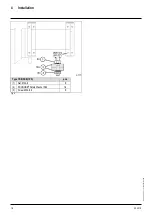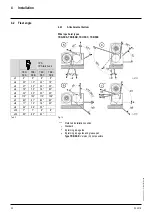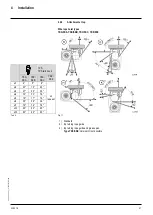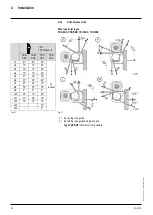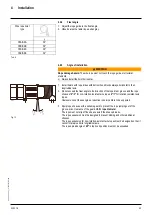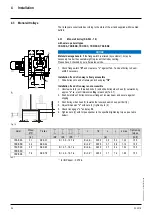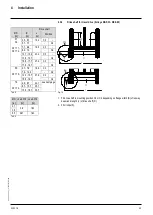
2
General safety notes
10
03.2018
ba
-o
.2
.6
.0
-us
-1.
1-
y
|
A
11
86
75
01
R
ev
A
A
2
General safety notes
The products are constructed according to the state of the art and recognised safety
rules. However, during use danger to the life and limb of the user or a third party can
arise, or adverse effects can affect the product and other property.
2.1
Use for intended purpose
•
Wire rope hoists are intended for lifting freely movable loads. Depending on their
design, they are for stationary or mobile use.
•
In the case of wire rope hoists with multiple load-bearing equipment, ensure that the
load is distributed evenly between the falls.
•
Any fundamental alterations and modifications to the product, such as e.g. welding on
load-bearing components, structural alterations to load-bearing components,
alteration of drives, alteration of speeds and motor outputs, replacing trolleys, etc.
must be authorized by the manufacturer, otherwise the declaration of
conformity/declaration of incorporation will be invalidated.
•
Also any work on or additions to the control must be authorized by the manufacturer.
The manufacturer cannot accept any liability for malfunctioning after unauthorized
work on the control.
•
The conditions in the place of use of the hoist must correspond to the operating
conditions for which the hoist was designed (including indoor/outdoor use, ambient
temperature, radiation temperature, wind, dust, splash water, snow, water, etc.
•
For hoists which work in combination and have more than one control (tandem
operation), action must be taken to coordinate the controls. This applies also to the
reaction of the protective devices. Controls must be constructed accordingly.
•
For hoists intended for automatic operation, the control must be designed
accordingly.
2.2
Inappropriate use
•
Use in areas with potentially explosive atmosphere.
•
Transporting molten metal.
•
Exceeding the maximum working load.
•
Transporting persons.
•
Pulling/towing or raising/lowering of a guided load.
•
Using the hoist in applications in which the working load changes with the position of
the load, as the hoist is not equipped with a load display and additional warning
device when it cuts off at overload.
•
Breaking away, pulling or towing of loads.
•
Use of rope drive for “guided loads”
without being designed for this type of
application.
•
Breaking away of tilted loads if the
rope drive is designed for the “guided load”
application.
•
Pulling loads at an angle, dragging loads or moving vehicles with the load or load
suspension equipment.
•
Do not knot load ropes or chains or shorten them with devices such as bolts, screws
or similar.
•
Removing the safety latch from suspension and load hooks.
•
Manipulating the overload safety device.
•
Operation with slack rope (loose windings on the rope drum).
•
If the product forms “
part of a machine
”,
the person placing it on the market must
ensure that the product meets the specific regulations of the application.


















